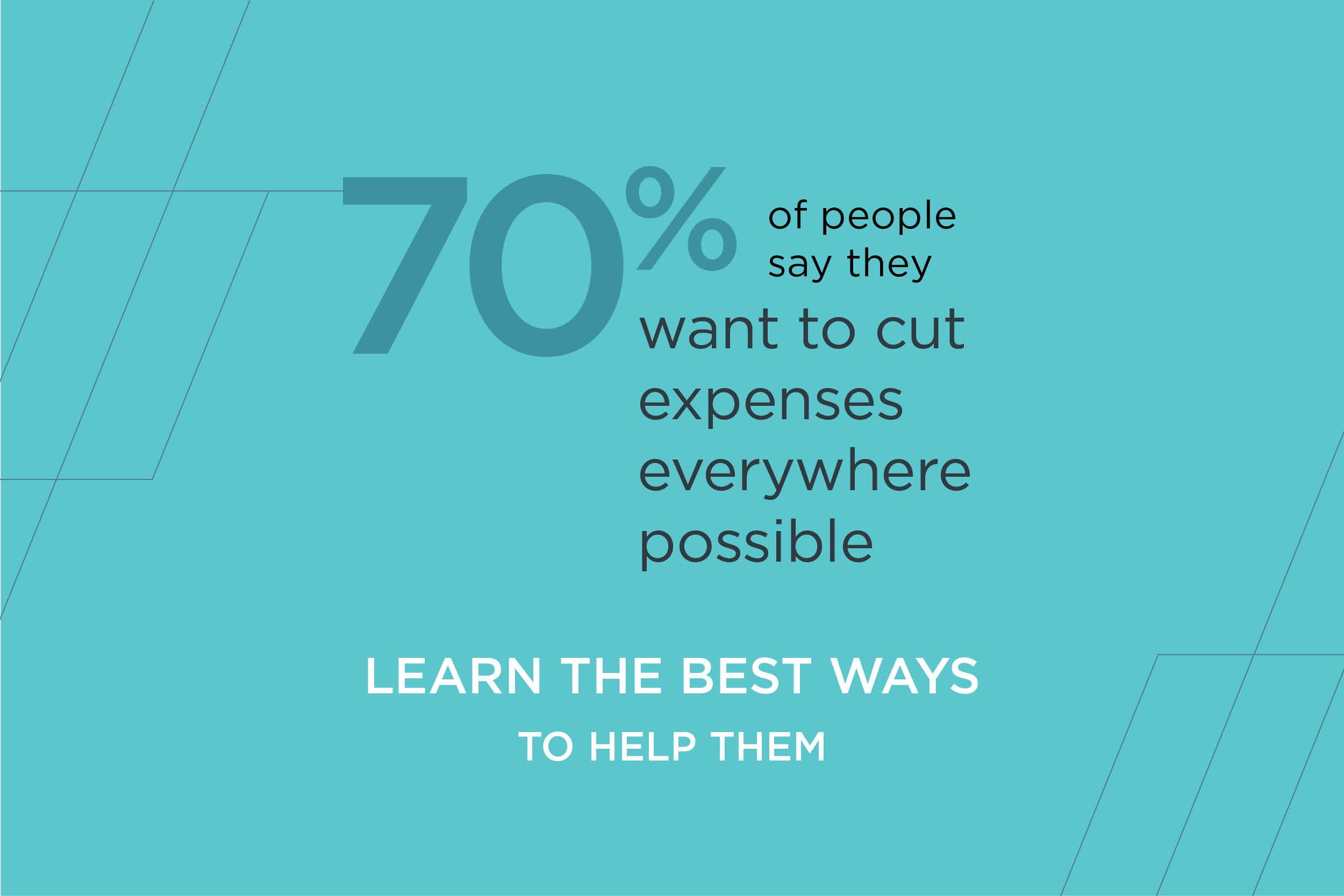If you tune to a news channel, there’s a good chance you’ll hear the words ‘economic downturn’ or ‘looming recession.’ There is a lot of chatter and it can be hard to sort through it all.
The past few years have been a constant struggle and these challenging times have changed people’s behavior and businesses’ outlooks. As a result, money management is more critical than ever.
Saving is encouraged and people are looking to put more in their retirement and emergency funds while trying to manage their day-to-day expenses. This behavioral shift will impact the offerings of banks and credit unions.
Financial institutions are selling a range of products, services and offers to attract customers. But are their offerings in line with what people expect from their bank or credit union? Let’s find out.
How Consumers View the Economic Slowdown
Financial institutions may feel the economic slowdown impacting their customers in the following ways:
Rising Prices Will Effect Consumer Spending
Ninety-three percent of people face challenges in the U.S. owing to rising prices and unexpected purchases.1 This will greatly impact spending as the public will prioritize necessities over leisure. Thirty-seven percent of Americans do not plan to make major purchases, and 70% want to cut expenses everywhere possible. 2
These are grim numbers for banks and credit unions. As a result, financial services marketers must be agile to respond to this worsening economic scenario and move aggressively to attract and retain consumers.
Lack of Savings
Unfortunately, 63% of Americans are living paycheck-to-paycheck. This means customers will dip into what little savings they have to make ends meet, causing financial institutions to struggle to maintain core deposit levels necessary to support growth and stability.
Financial Health and Literacy
During the pandemic, people have realized the importance of financial literacy and money management. And, now more than ever, they are looking to their financial institutions for knowledge and advice. People are actively looking for ways to help the rebuild their savings and have a cushion during tough times.3 Their desire for financial literacy and increased savings is being reinforced by high inflation combined with an economic slowdown.
Banks and credit unions can build trust and loyalty by educating people on financial matters, promoting financial health and good decision-making and, in the process, highlighting products and services that target their wants and needs.
How Are Consumers Planning to Survive the Economic Slowdown
Consumers Are Struggling – But Focused – On Saving
It is true that core deposits are decreasing, but there are many factors impacting consumers’ ability to save. 41% of customers are trying hard to save.4 They no longer want to live paycheck-to-paycheck and are aspiring to save to prepare for unexpected and challenging situations that may arise in the future.
Financial institutions must be aware of these factors when considering the falling rate of deposits. Banks and credit unions can benefit from the consumers’ savings mindset by introducing small savings schemes which will motivate people to put away even a few dollars a week. Positively reinforcing – and rewarding! – saving behavior pays off in the long run through consumer trust, loyalty and gratitude. Once the economy picks up and customers have more cash, they will likely start saving more.
People Are Looking for Deals and Discounts As They Struggle to Make Ends Meet
Bargain hunting isn’t a tactic only for the retail industry, it’s an important strategy for financial institutions to compete as well. Scraping the non-sufficient balance charges, account maintenance charges, and minimum balance maintenance charges – even temporarily – will address a very common consumer pain point: Fees. This move will help Americans save $17 billion a year, but banks need to be faster to make these changes.
Customers Will Get Creative With Payment Methods to Stretch Their Dollar
As people struggle to strike a balance between meeting their day-to-day expenditures and a bit of comfort and luxury to make life easy, they will get increasingly creative with payments by utilizing options like Buy Now Pay Later (BNPL), digital wallets, and person-to-person (P2P) payments.
FinTech companies are gaining ground here by offering BNPL services to cash-starved customers. Banks and credit unions should continue to educate people about the various payment methods available to them and the benefits of making payments through digital wallets.
1-4 Vericast Awareness to Action Survey, September 2022, n=1,842
